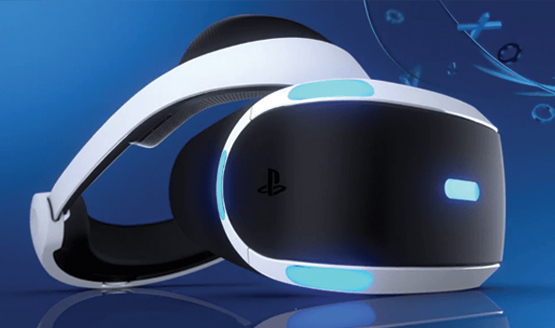There isn’t much more exciting for us here at PlayStation LifeStyle than a new PlayStation hardware launch. But this time, it’s different – this isn’t just a hardware launch, it’s the launch of a new medium for PlayStation. And the promise alone of what that entails is beyond exciting for PlayStation, the gaming community, the industry, and even the mainstream audience.
Virtual Reality is finally a reality for consumers thanks to an affordable price-point, and it being powered by a PS4 console that’s already in the homes of tens of millions of gamers across the globe. Sony has done what for a long time seemed impossible, and it’s now up to developers ripe with fresh ideas to provide exciting, new experiences.
Made for the Mass Market
If you already own a PS4, then you’re in luck, the cost of the PSVR is only $399. Add in a couple PlayStation Move controllers which are essential for the full PSVR experience, the PlayStation Camera, and you’re almost $500 in the hole before you even look at the games. That’s still cheap for VR. It’s not Samsung Galaxy Gear VR cheap, and unfortunately, uninformed consumers will likely make that comparison, but when it comes to the quality of the VR experience, there’s no comparison.
A better comparison would be the Oculus Rift or the HTC Vive, but both of those require a dedicated Gaming PC rig to run. Sure, they may boast a higher resolution, and — with SteamVR — an already massive library of games, but to run either of those properly you are in the neighborhood of spending thousands.
But none of those other options are poised to become a platform for games the same way the PlayStation VR is thanks to PlayStation’s decades of developer relationship, internal first-party studios, and ability to nab exclusives that move hardware units. The PS4 install base itself further helps this cause.
Designed for Comfort, Ease of Use, Not Looks
The PSVR, for the most part, is plug and play, and even someone not familiar with setting up a video game console should have very little issue setting it up for the first time. Sony streamlined the process with a step-by-step instructional guide and cables clearly tagged with numbers for each step of setup. Getting a PlayStation VR ready to go should be a breeze for even the most technically challenged.
The HDMI cable that runs from your PS4 to TV will need to be re-routed through a small 6-inch by 6-inch processing unit that is designed to mimic the look of the PS4 itself. A USB cable is routed from the processing unit to the front of the PS4 – one of my bigger gripes with the PSVR as I prefer to keep the cables in my entertainment center carefully concealed. This might explain why the PS4 Pro received an additional USB 3.0 port on the rear of the console to keep the PSVR’s necessary connections concealed.
The PSVR itself also connects to this processing unit with a large extension cord to give ample lead for larger spaces and to allow more movement from the player. The PSVR itself is incredibly comfortable, surprisingly. I’ve come across headsets that had a heavier footprint on my head. Sony’s design allows for quick resizing between users or sessions, minute adjustments to ensure the best visibility, and a weight in the rear of the band keeps the PSVR from ever feeling unbalanced. It also fits comfortably over a pair of glasses.
It’s built for long, comfortable gaming sessions, but the actual design – or “look” leaves a lot to be desired, especially from the standpoint of someone who appreciates a cleaner look for their home entertainment setup. Video game consoles have come a very long way in their design to go from looking more like a toy in the earlier days of consoles, to sleek, set-top box consoles that are not only attractive in their appearance, but blend into a home entertainment center inconspicuously. The PSVR looks more toy, than high-end electronics device.

Necessary Peripherals
In addition to the PSVR itself, a PlayStation Camera and two PlayStation Move controllers are necessary to get the most out of the experience. Sony is quick to point out that games can be controlled via the Dualshock 4 controller – and they can be. But if you’re investing $399 in PlayStation VR, spend the extra money for the PlayStation Move controllers that give you both-hand tracking in real-time, allowing you to maneuver and manipulate your hands realistically in the game world. Playing the same game with the DualShock 4 as opposed to PlayStation Move controllers doesn’t resonate the same way – you just don’t feel the same level of immersion, and that’s what the PSVR is truly about.
While not as important to the VR experience as the PlayStation Move controllers, a PlayStation VR Aim Controller will be launching alongside PSVR-exclusive sci-fi FPS game Farpoint and is designed to get the most out of a first-person shooter. The PlayStation Camera is the only peripheral that is truly required for PSVR, for tracking the lights located on the PS Move controllers, the DualShock 4, and even the lights for head-tracking on the PSVR itself.
I’m nitpicking, but I also find it frustrating that Sony didn’t add a couple USB ports to the processing unit or to release a PlayStation Move 2.0 specifically designed for the PS4. I had forgotten that the PS Move used a PS3 era mini-USB connection while the DualShock 4 used a micro-USB connection. Yet another set of cables I need to keep around to charge controllers for the same console.
Living Room Reality
On to what really matters – the games, and the VR experience at home. And here’s where the PSVR shines. It may not have the looks we’ve come to associate with the PlayStation family of products, and there are some minor nuances that keep the PSVR from being perfect, but when it comes to gaming and the actual Virtual Reality experience, the PSVR is an absolute grand slam for Sony.
There is no experience more immersive than the PSVR. From the head tracking to the controller/hand tracking, everything is 1:1 with what feels like zero latency. When you first load up Batman Arkham VR and put on Batman’s famous cowl, you…Feel. Like. Batman. The running joke is everyone saying the quote “I am Batman”. It’s never been more appropriate than this situation.
Even small things, such as being lowered into the depths of the ocean in a shark cage gives a real sensation of descent. In Until Dawn: Rush of Blood, the highs and lows, twists and turns of a rollercoaster give that familiar ‘pit of the stomach’ feeling in your core, even with you knowing full well that you’re not really on a rollercoaster. And when something jumps out at you…you really cannot help but jump. Virtual Reality tricks the brain into thinking it’s actually experiencing these sensations, and there is nothing closer to feeling like you’re in the game itself.
The promise of where developers will take this experience in time is enough to get me to fully recommend the PSVR as it currently is, but even at launch – with over 50 games due out by year’s end – it’s well-worth the investment for gamers. Even more so if you already own a PS4.
The experiences, genres, and gameplay types vary so much, there is something for everyone. Puzzle games require physical manipulation to complete. Shooters call for actual aiming skills, not just swift movements of an analog stick. Online multiplayer is still entirely possible, as is the functionality of the Share button, and thanks to the Social Screen, others in the room can view what the PSVR user is seeing and can feel part of the experience. And while The PlayRoom VR isn’t available on the PS Store at the time of this writing, it will offer a handful of mini-games that show off local multiplayer, where users with DualShock 4 controllers will play against the user wearing the PSVR headset.
To give all new PSVR owners a taste of what’s available, Sony is including a demo disc in each PSVR box, consisting of 18 different titles for NA (eight for EU). A few games that I’ve played thus far, such as PlayStation VR Worlds, and Job Simulator, feel a lot more like tech demos than actual games. In fact, a few of the PlayStation VR Worlds games are actually expanded tech demos that I’ve tried at past E3 conventions. Still, that doesn’t detract from the fun that can be had, or the ability to show off what the PSVR is capable of.
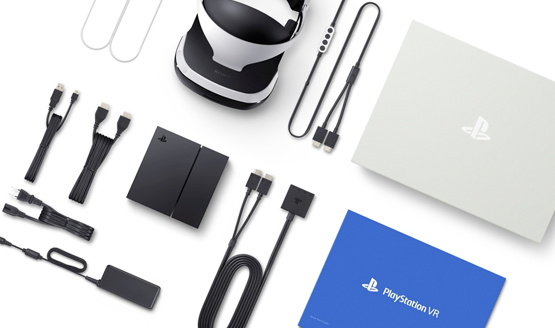
The Future of PlayStation VR
Like any hardware launch, the future is very much up in the air. And while I’d love to say Sony will definitely ensure that the PlayStation VR becomes a thriving platform for games, I can’t help but look at the PlayStation Vita, or even the PlayStation Move controllers that the PSVR is helping resurrect from the grave. Even Virtual Reality as a medium still is a big question mark on it. Will it resonate with consumers? Will developers create experiences that justify the purchase of expensive hardware? And will Sony continue to market and support the hardware years from now? None of those questions can be answered, so at launch, taking the plunge and buying a PSVR is taking a chance and betting on both the PSVR itself and Virtual Reality as a gaming experience.
What I can say for sure is, Sony has built a solid, comfortable VR headset at a price point that is lower than the competition, and is supporting it properly at launch, with plans to support it far into 2017 and beyond. Sony is being aggressive with the PlayStation brand, and eager to not only keep, but further widen the gap between it and its competitors. They’re being creative, and they are listening to and directly catering to gamers as consumers. As long as the gaming community continues to seek new, immersive experiences, and vote with their almighty dollar, the PlayStation VR will become a mainstay in the homes of many. There is even some mainstream appeal, as anyone who sees it — even non-gamers — are eager to dive right in and give it a try. The PlayStation VR and its software provides the wow factor necessary to create the word of mouth buzz something like VR is going to need to become truly mainstream. For gamers, PlayStation VR is a must-have and will no doubt become one of the hottest sellers this holiday season.
PlayStation VR, PlayStation Camera, PlayStation Move Controller (x2), and PSVR software provided by SIE for review.
PlayStation VR info dump
-
PlayStation VR - Everything You Need to Know
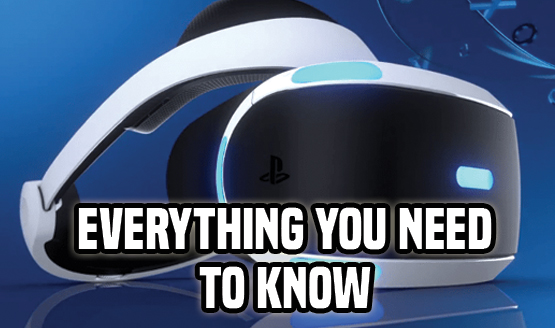
Introducing Sony's all-new platform.
-
What is PSVR?

Previously codenamed Project Morpheus, PlayStation VR is the new head-mounted virtual reality hardware hailing from Sony. It’s designed to harness the power of the PS4 — and soon the PS4 Pro — in order to thrust players into the epicentre of action. Player movement is tracked using the headset’s on-board accelerometer and gyroscope, and nine positional tracking LEDs.
Furthermore, the headset comes packing a 5.7 inch custom OLED display, which offers a resolution of 1920xRGBx1080.
-
Form Factor
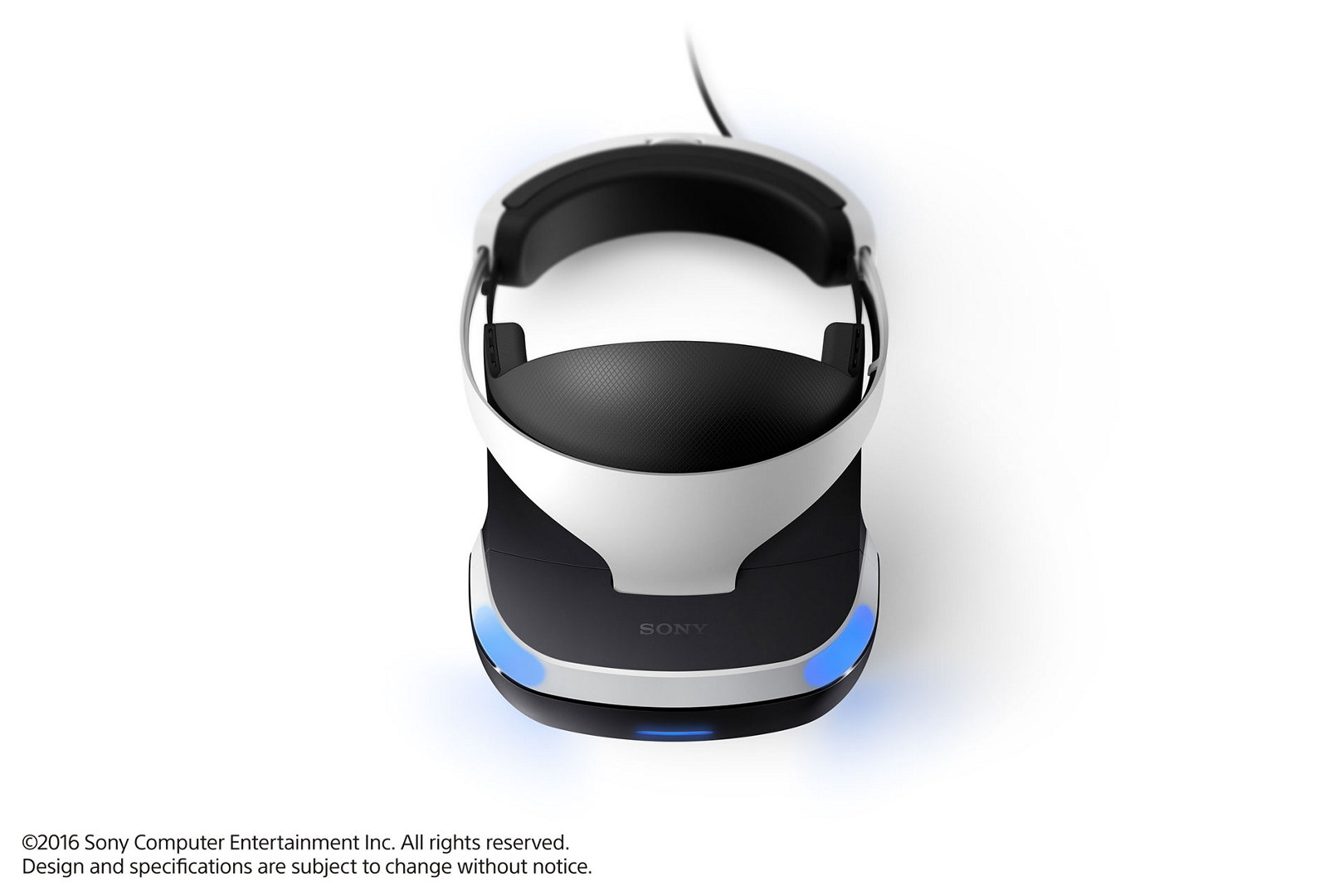
Measuring 187×185×277 mm and weighing in at around 610 grams sans cable, PlayStation VR was "engineered to be balanced, comfortable, and completely adjustable. It’s designed to feel like it’s not there – keeping you free from distraction as you explore new gaming worlds.”
-
Price Point
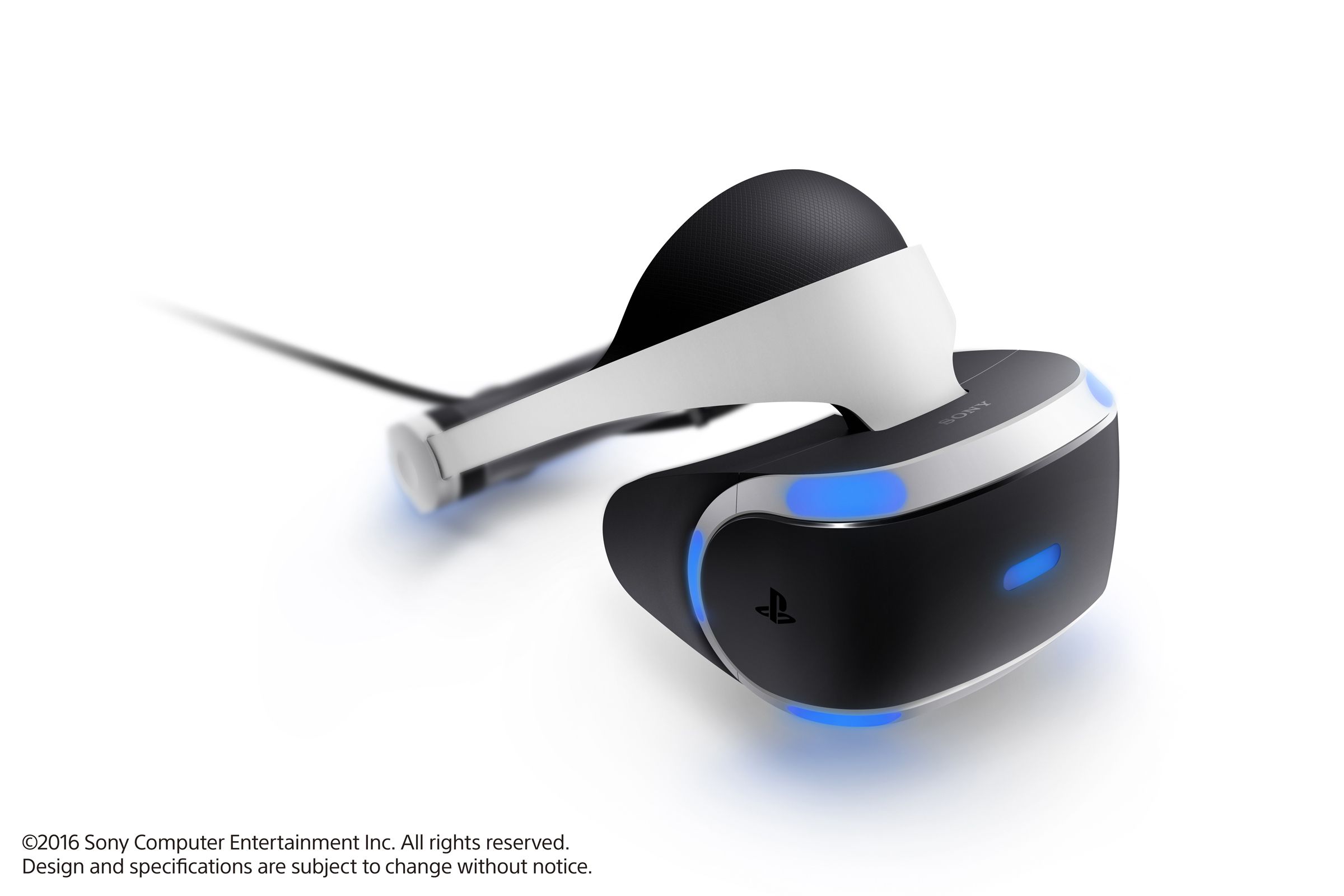
PlayStation VR will be $399 (€399/£349/$549 CAD) at launch, placing it into a similar bracket as the PS4. That’s a conscious decision by Sony, too.
“We wanted to make sure that we came out with a product that could be available to the mass, 36-plus million PS4 users out there. We think that pricing it similar to the price of a console is the right marketing space to be in. Luckily we have the engineers on board, led by the teams that created the PS4, that we’re able to realize that product with that quality at that price level.”
-
What Do I Need?
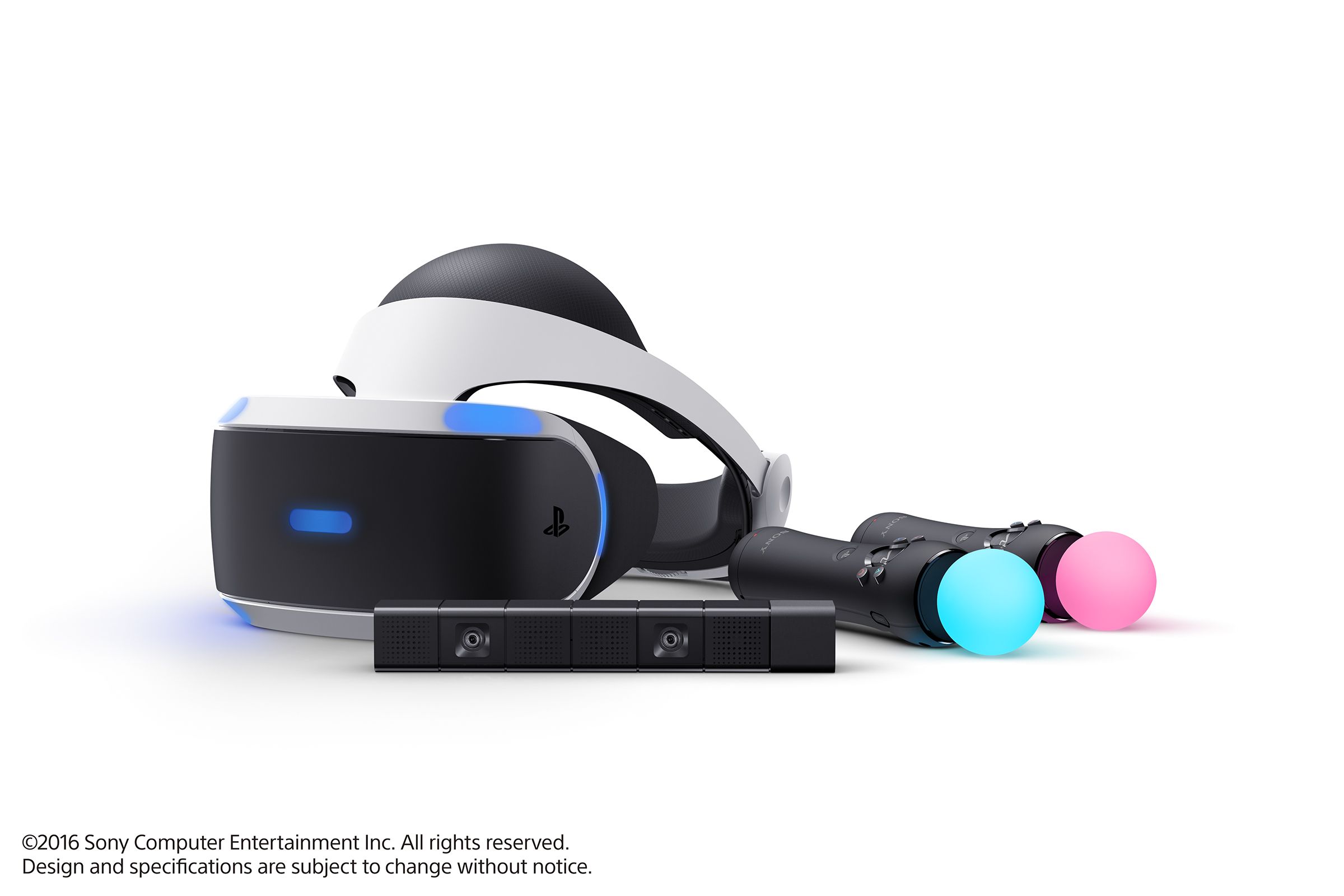
A PlayStation 4, for starters. Beyond that, a PlayStation Camera is considered mandatory so that the PSVR is able to track your head movements, while PS Move and the Aim controllers are utilized by a select handful of games. Both of these peripherals can be picked up separately.
-
DualShock 4 Support as Standard
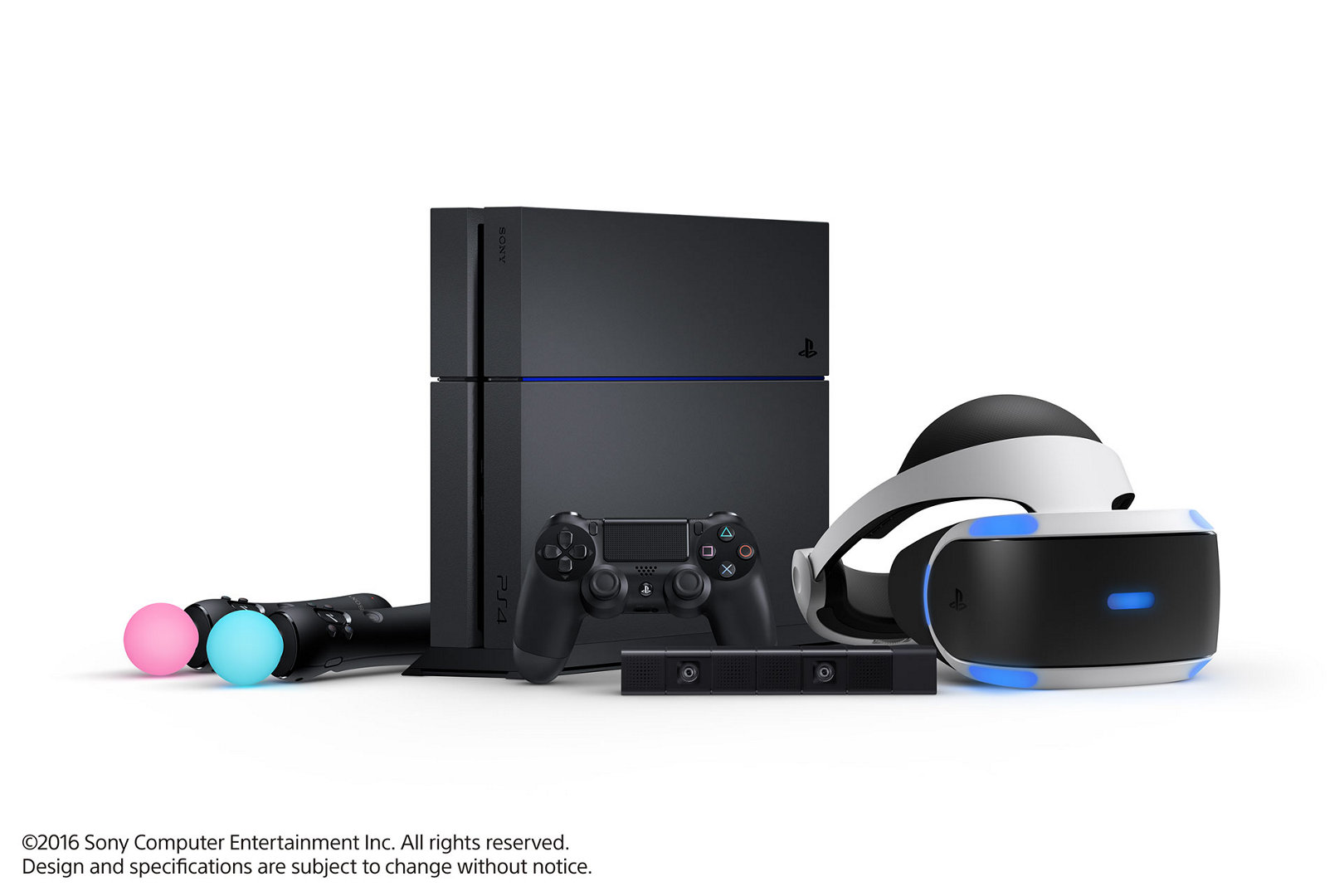
Though Move controllers are said to enhance the experience, offering more flexible and realistic control schemes, you can rest assured in the knowledge that all PSVR games will support DualShock 4 at the outset.
“All PlayStation VR titles will support DualShock 4 controllers. However some game experiences will be enhanced with the use of peripherals such as Move or the recently announced Aim controller.”
-
What’s in the Box?
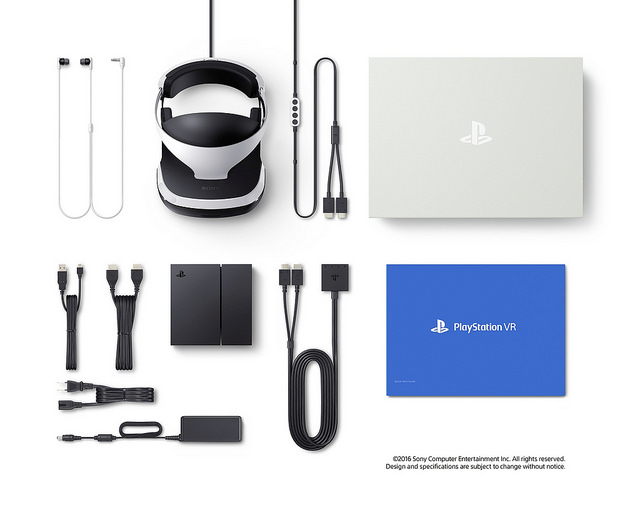
By parting with 399 of your hard-earned dollars, your PlayStation VR order will come packing the headset itself, a processing box, power cable, earphones, dual HDMI connector that links the headset to the PS4, an HDMI cable and a micro USB cable.
-
Unboxing Video
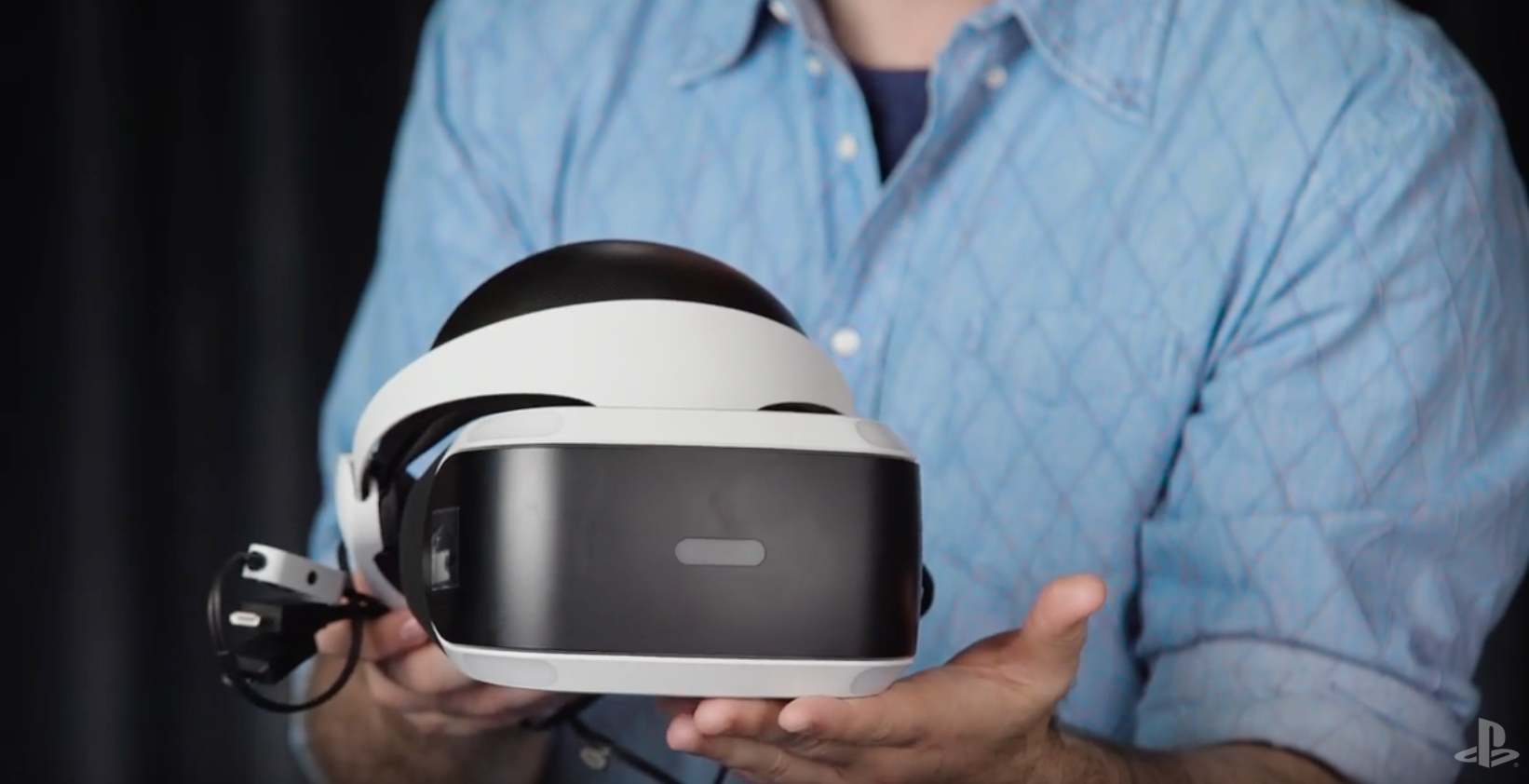
Sid Shuman of PS Blog showcases all of the bells and whistles included in the PlayStation VR Core Bundle via this unboxing video.
-
Speaking of Boxes...
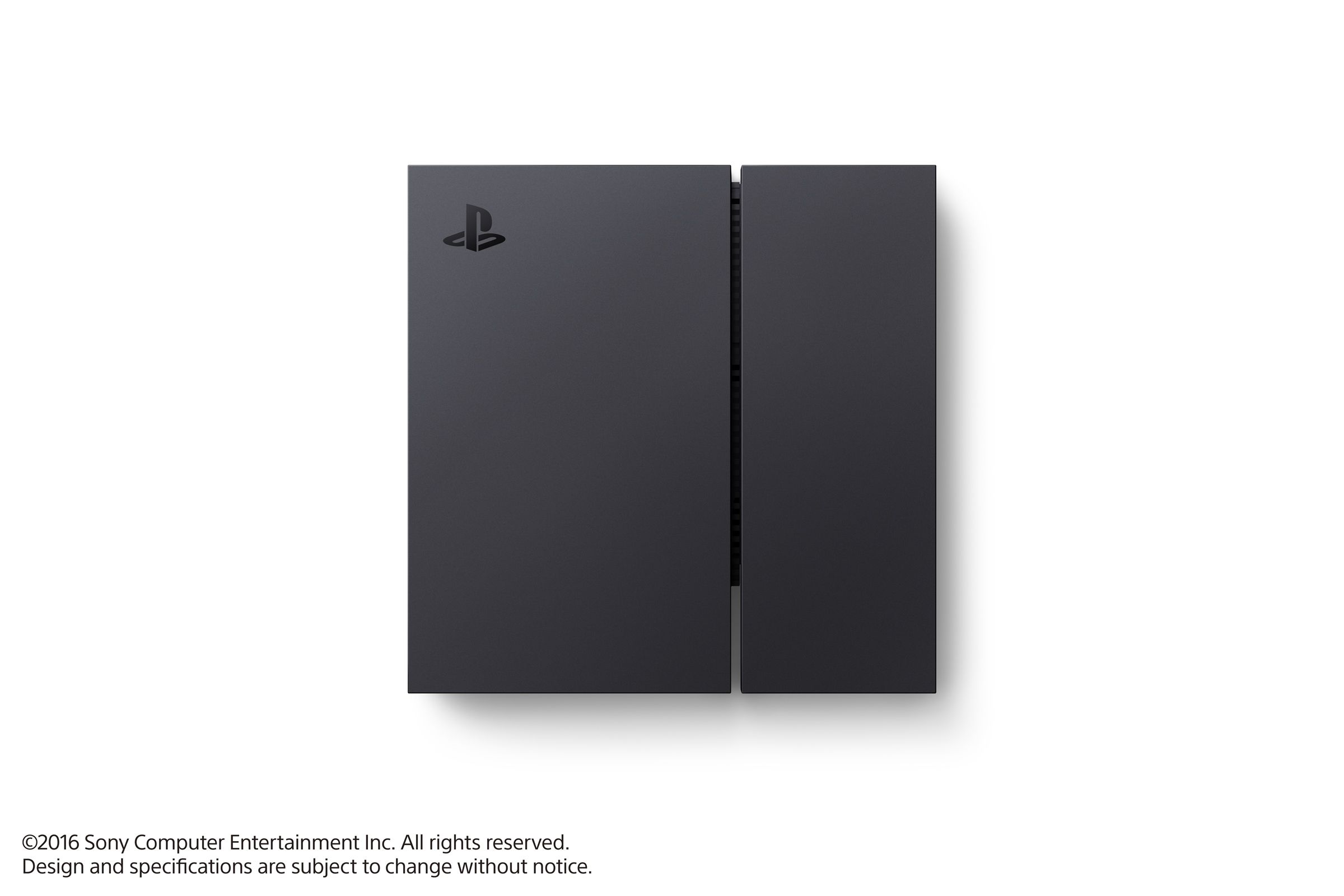
PlayStation VR’s processing box, a bite-sized unit that is around the size of your typical Wii, will handle the bulk of 3D audio, among other technical feats.
- It carries out object-based 3D audio processing (“really good and important to VR”).
- It displays the social screen – undistorting the VR output for display on TV. Quality is lost in this process, so it scales the image up and crops it so you don’t see edges.
- “Separate mode” – a completely separate audio and video stream you can send over to TV, as opposed to the mirrored social screen. It’s sent compressed to the PU and then uncompressed by the device and sent to the screen. We’re told that this was “an innovation that came quite late” in the development of the system.
- It displays PS4’s system software interface in cinematic mode, handling the display of traditional 2D content.
-
Technical Specs
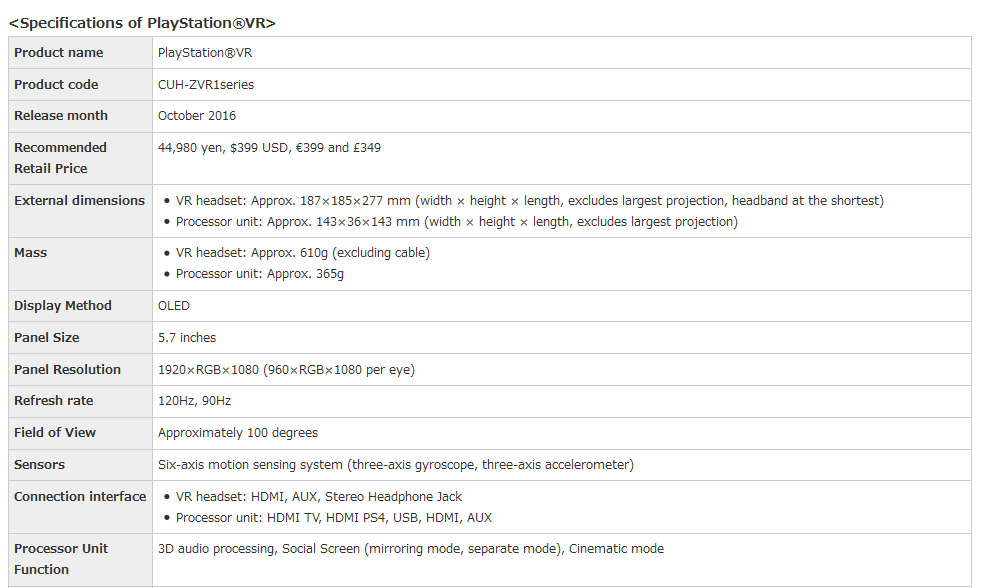
All of the technical minutia you would ever need to know about PSVR can be found here.
-
New Peripherals
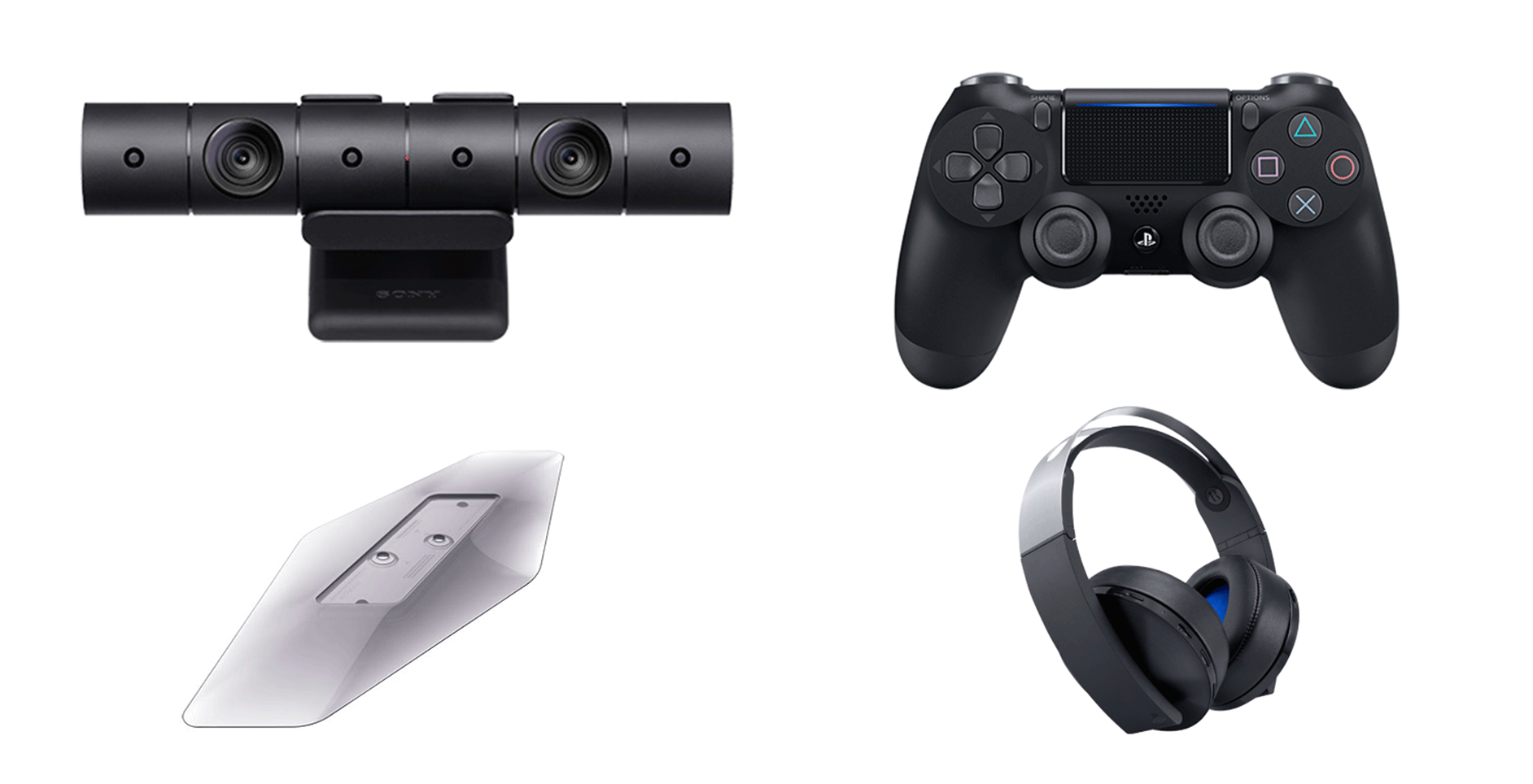
Coming off the back of the PS4 Pro unveiling, Sony confirmed the existence of new models of the PlayStation Camera and the DualShock 4. The latter of which retains the same form factor as its forebear only with a thin slit in the TouchPad to reveal the Light Bar from the front. As for the camera, it’s a slightly smaller model.
-
Recommended Play Area
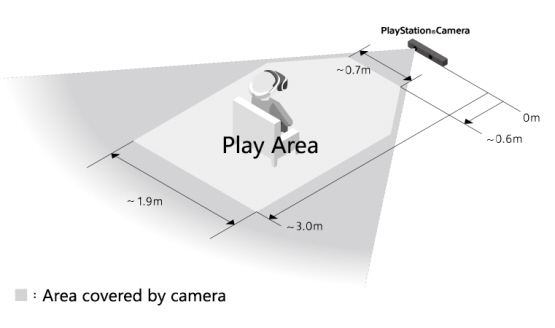
Suggesting that people sit while using VR headsets, in the graphic (left) Sony outlines the recommended play area for PSVR, adding:
"Limit your use of PS VR to within the Play Area. The height of the Play Area depends on the range captured by the camera. Clear an area larger than the Play Area of all obstacles before using PS VR and remain seated whenever possible. If an application requires you to stand while wearing, the VR headset, follow the application instructions carefully, and maintain awareness of your surroundings."
-
Adjustable Screen Size
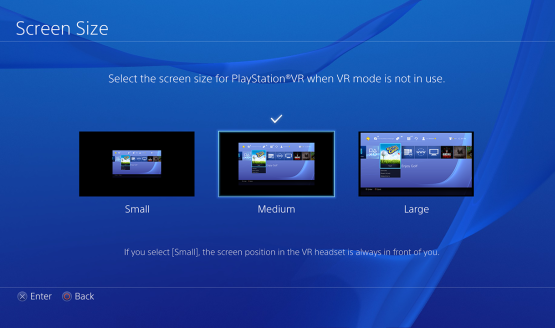
Sony says PlayStation VR can be played wearing glasses, but “there may be individual differences, basically users can play while wearing glasses.”
-
Cinematic Mode/Screen Mirroring
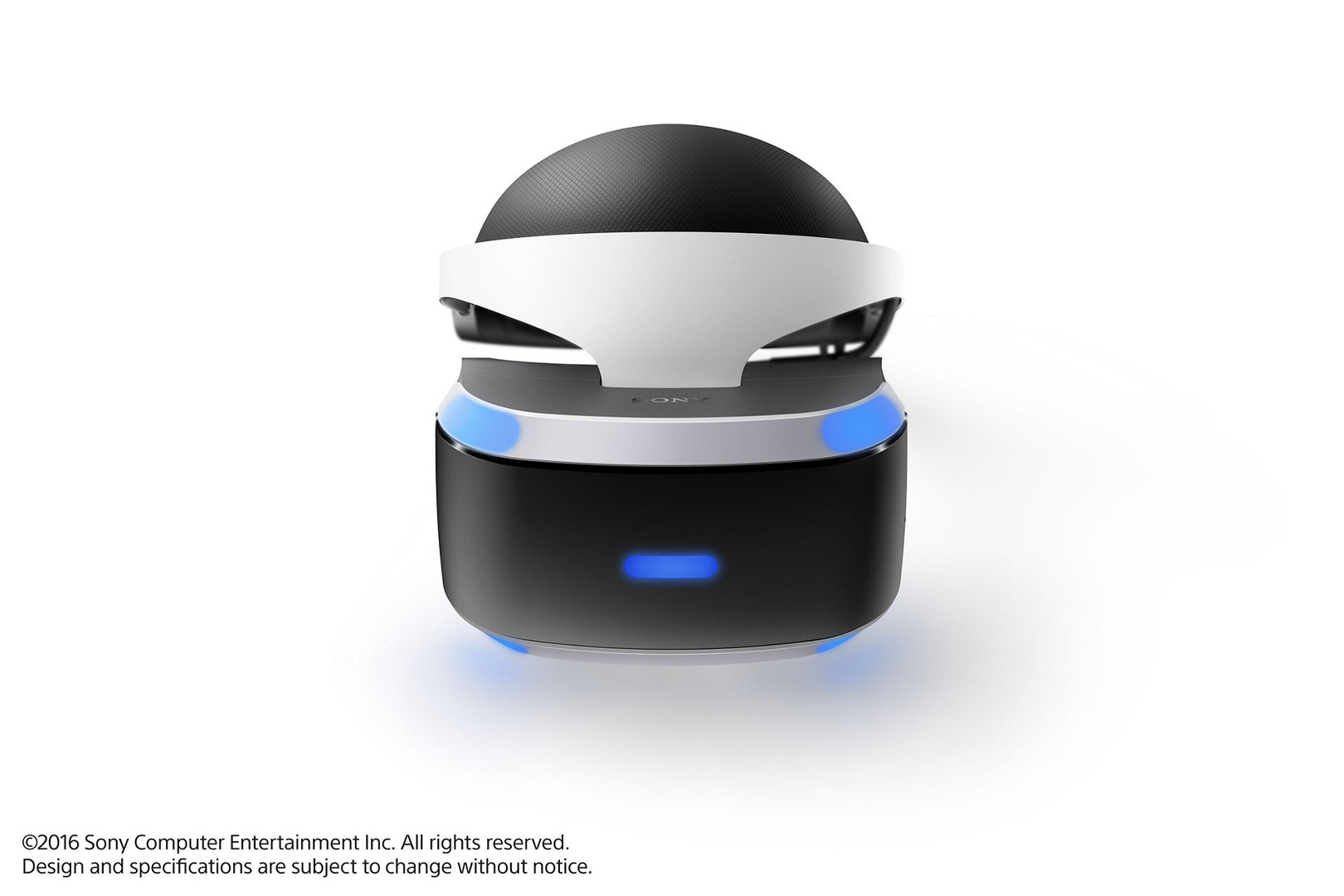
Both Cinematic Mode and the device's screen mirroring features ensure PlayStation VR doesn't always have to be an isolating experience.
- By using “Cinematic mode”, users can enjoy various PS4 contents and features on a big screen in a virtual space such as PS4 games and videos.
- PS VR can also be used to enjoy 360-degree photos and videos taken by devices such as an omni-directional camera.
-
Launch Lineup
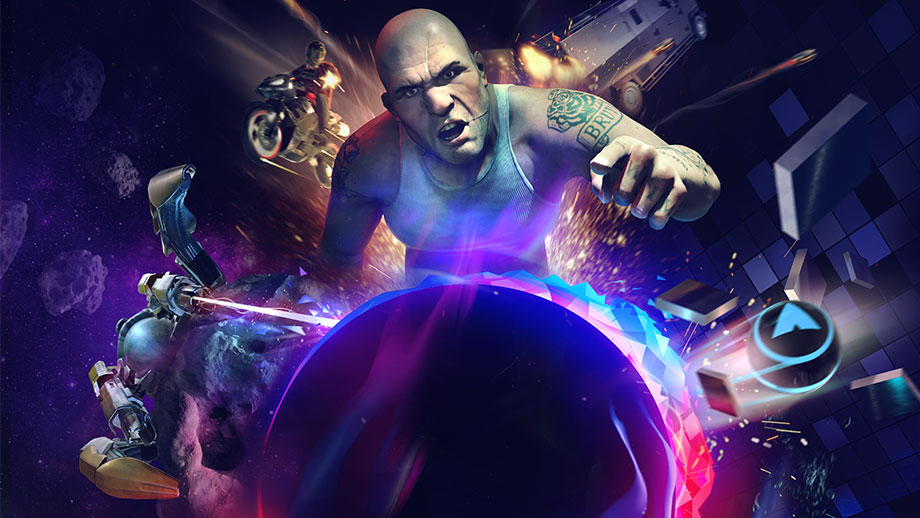
Following the last-minute addition of Tangentlemen's Here They Lie, PSVR's launch lineup in North America is currently comprised of:
Ace Banana
Batman: Arkham VR
Battlezone
DriveClub VR
EVE: Gunjack
EVE: Valkyrie
Fated: The Silent Oath
Harmonix Music VR
Headmaster
Here They Lie
Hustle Kings VR
Loading Human: Chapter 1
PlayStation VR Worlds
Rez Infinite
RIGS: Mechanized Combat League
SuperHyperCube
Super Stardust Ultra VR
Tethered
The Playroom VR
Thumper
Tumble VR
Until Dawn: Rush of Blood -
Demo Disc Included
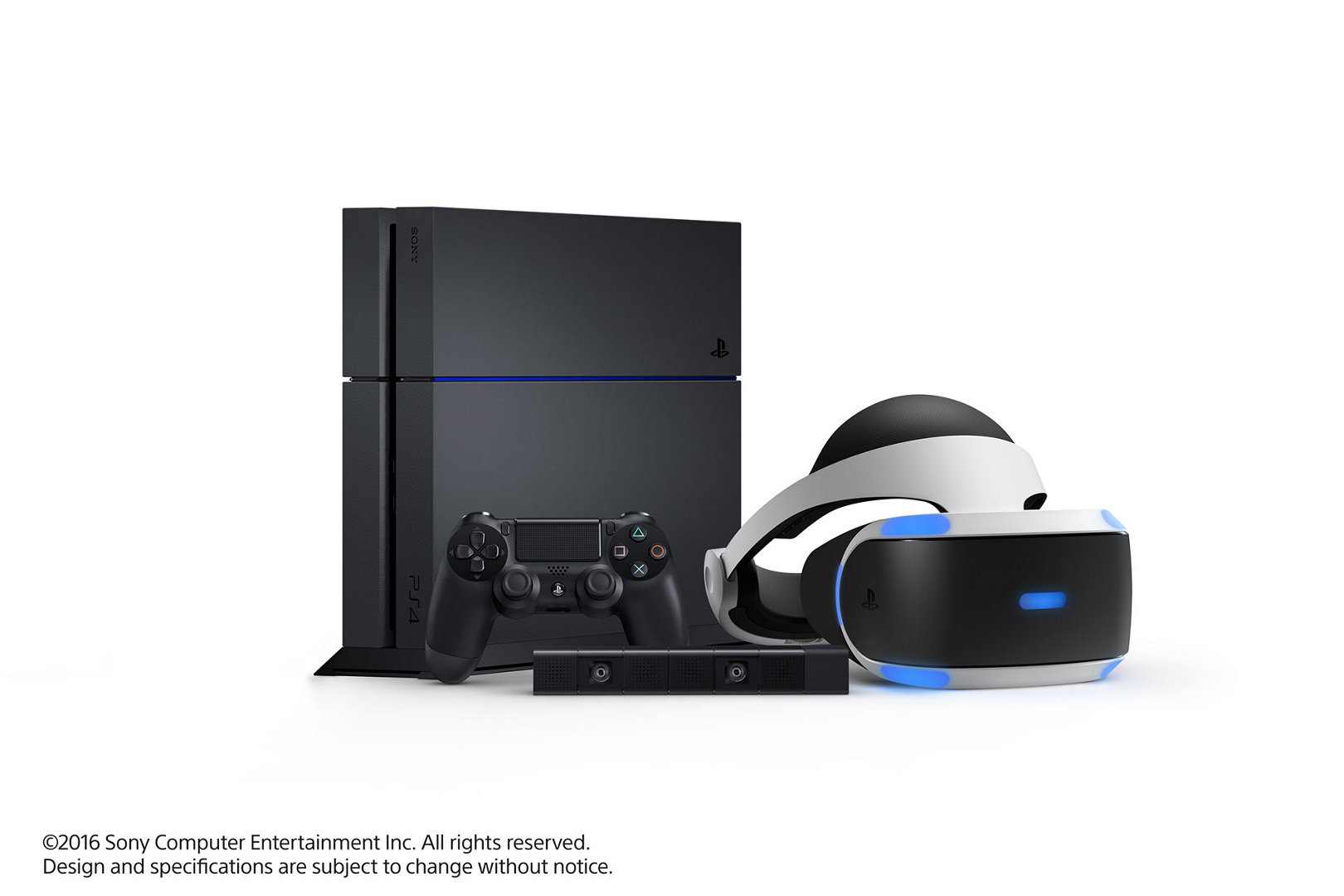
The number of games on disc included varies on a region by region basis, but rest assured that those vertical slices are designed to showcase “five minutes of awesomeness.”
Below, you'll find a breakdown of each region. You can, however, keep up-to-date with all new releases via our dedicated page.
US: 18 games.
Europe: Eight games.
-
Game Prices
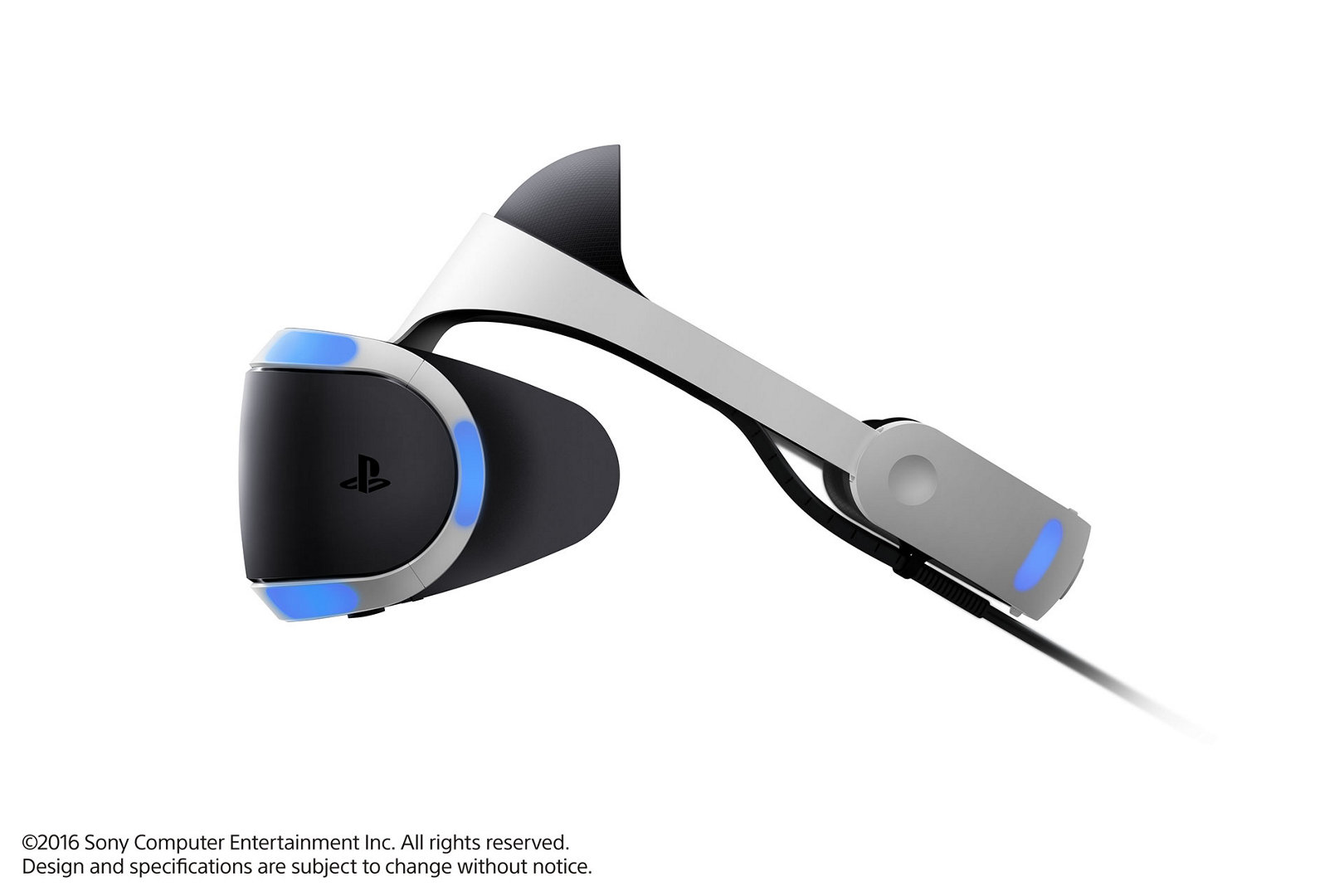
By and large, VR game prices will be markedly cheaper than your standard, $60 price tag. They'll range from meaty top-tier experiences in the vein of Rigs ($50) to Batman: Arkham VR ($20) and other smaller, bite-sized titles.
-
Short, Immersive Experiences
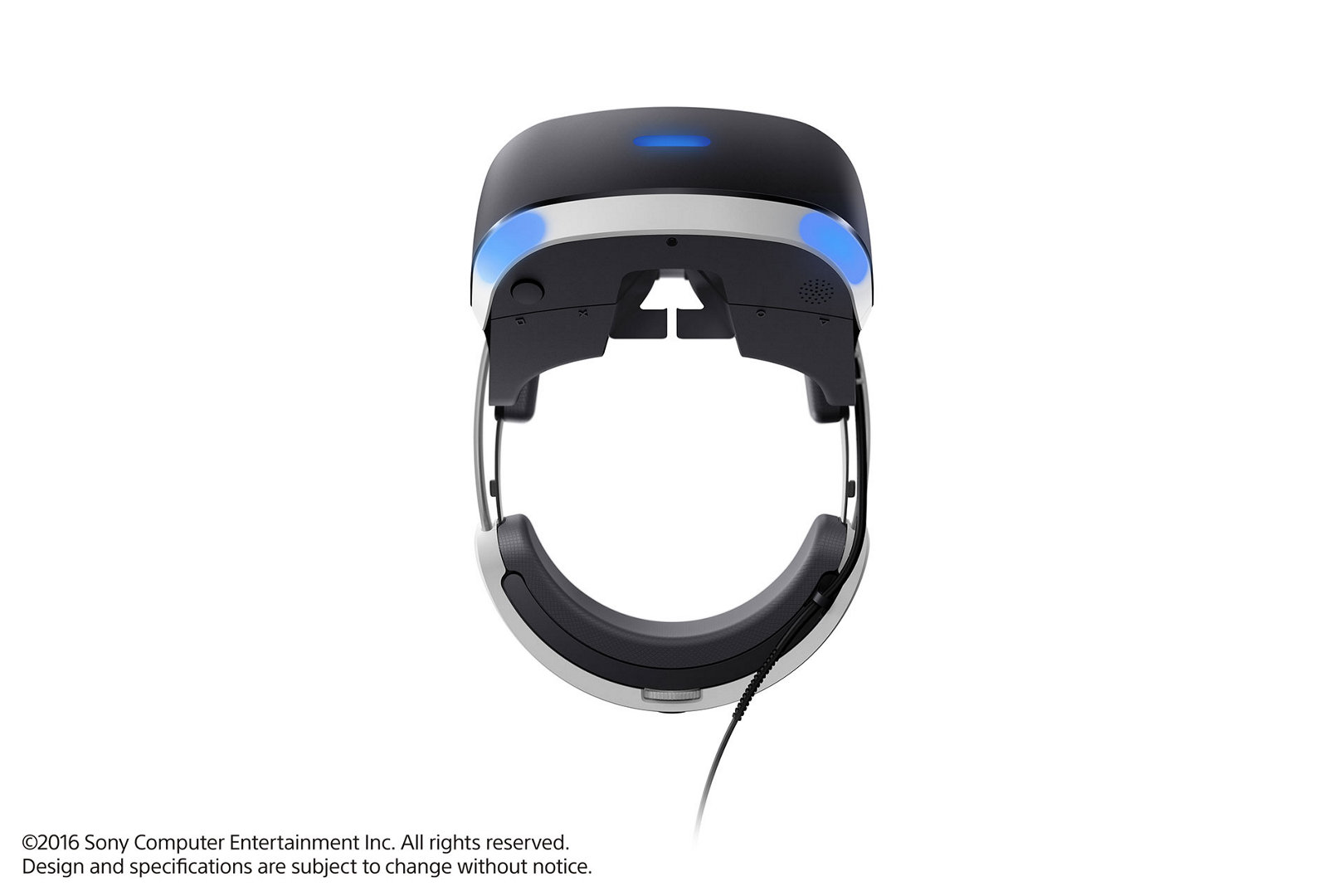
While Sony has stressed that PSVR has attracted AAA support (more on that later), the experiences offered up PlayStation VR are more intense and slightly shorter to their console brethren. Sony boss Andrew House even likened it to a theme park ride, stating:
“I’ve been very vocal that I tend to believe this generation of VR lends itself more to short-form content, than perhaps it does to long-form experiences. I don’t see that as a deficit or a negative. I tend to liken the VR experience more to something like a theme park ride, in that it’s short, but it’s very intense and it’s very enjoyable.”
-
Blockbuster Support
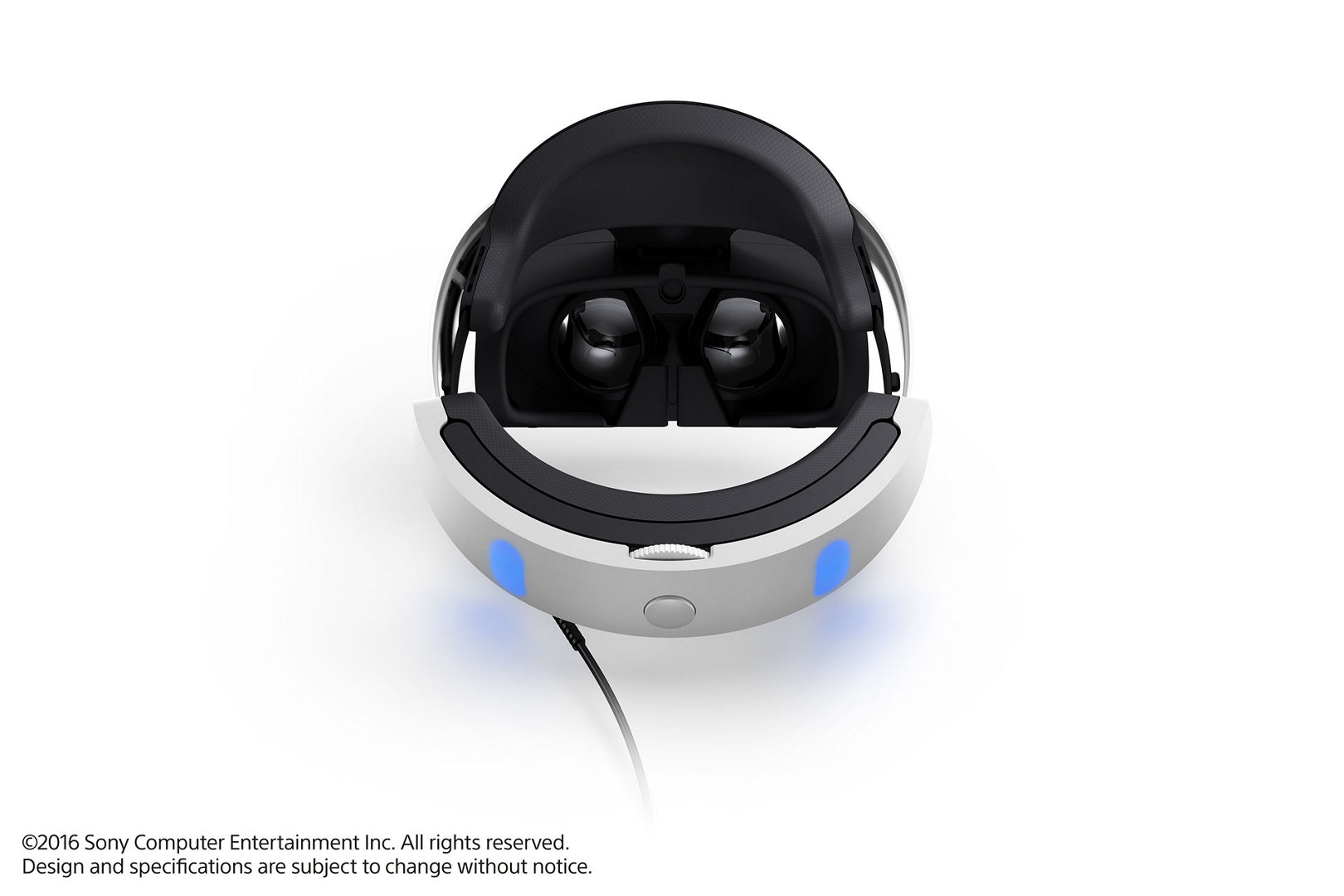
Don’t be fooled into thinking that everything coming to PlayStation VR will be bite-sized morsels of content; even if major developers aren’t currently prepping standalone titles for the platform, many of this year’s releases will incorporate some form of VR compatibility. Call of Duty: Infinite Warfare and Rise of the Tomb Raider are two such games.
-
Pre-Orders Blew Past Expectations

Soon after pre-orders opened back in March, multiple outlets including Amazon sold through their initial stock within minutes, while sales of the PlayStation camera ballooned 1000 percent. Pent-up demand for PSVR is palpable, it seems.
-
Supply Constraints Inevitable
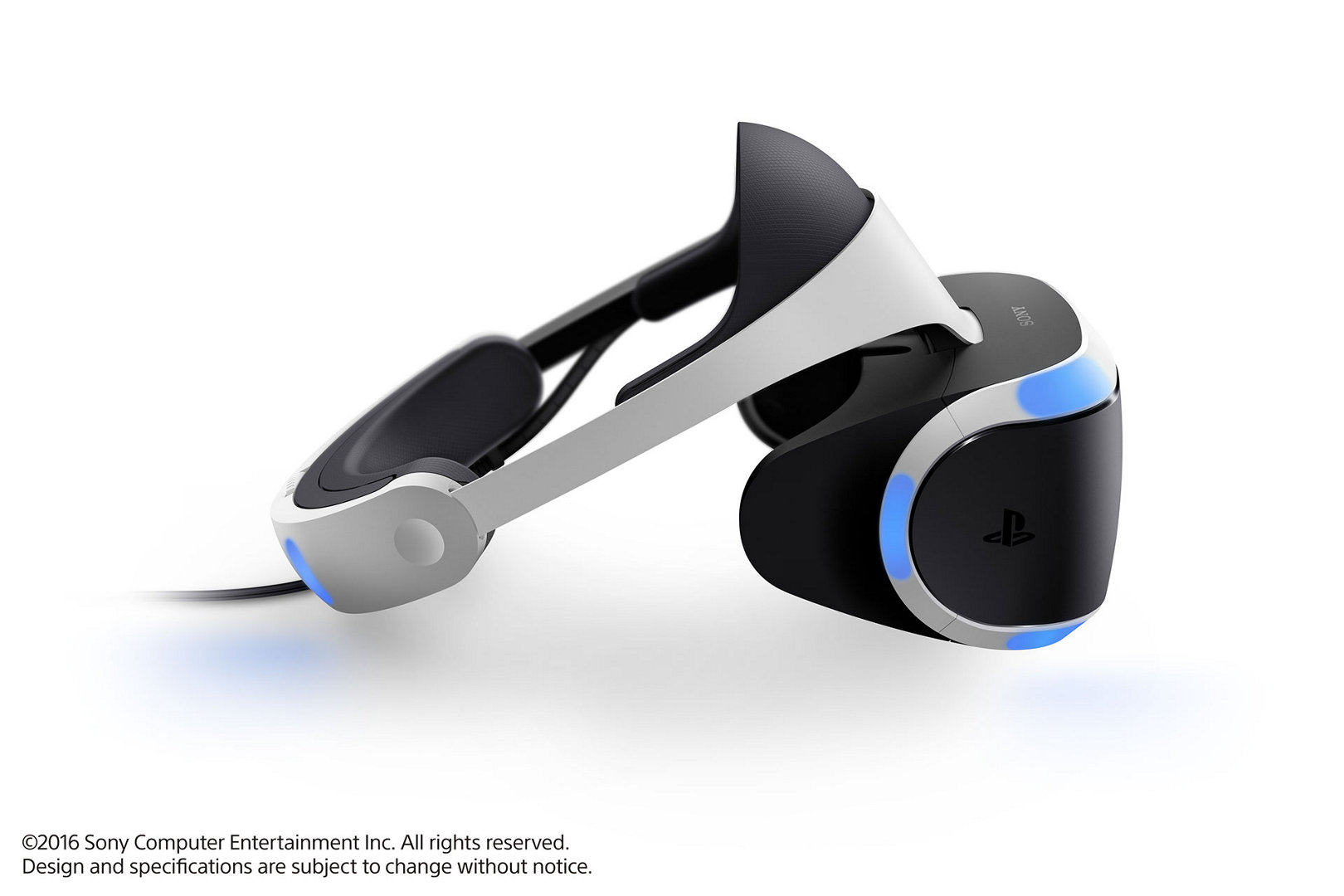
That means supply constraints are almost certainly inevitably, though we’ll not know the extent of those limitations until release. A good problem for Sony, of course; not so much for those who’ve yet to pre-order.
“We have growing confidence that we’ll be supply constrained with this product, but we’ll do our very best to meet demand. Virtual reality is a medium that’s in its infancy. With such a nascent, very new form of storytelling, it’s difficult to predict what user uptake is going to be.”
-
Why We’re Excited
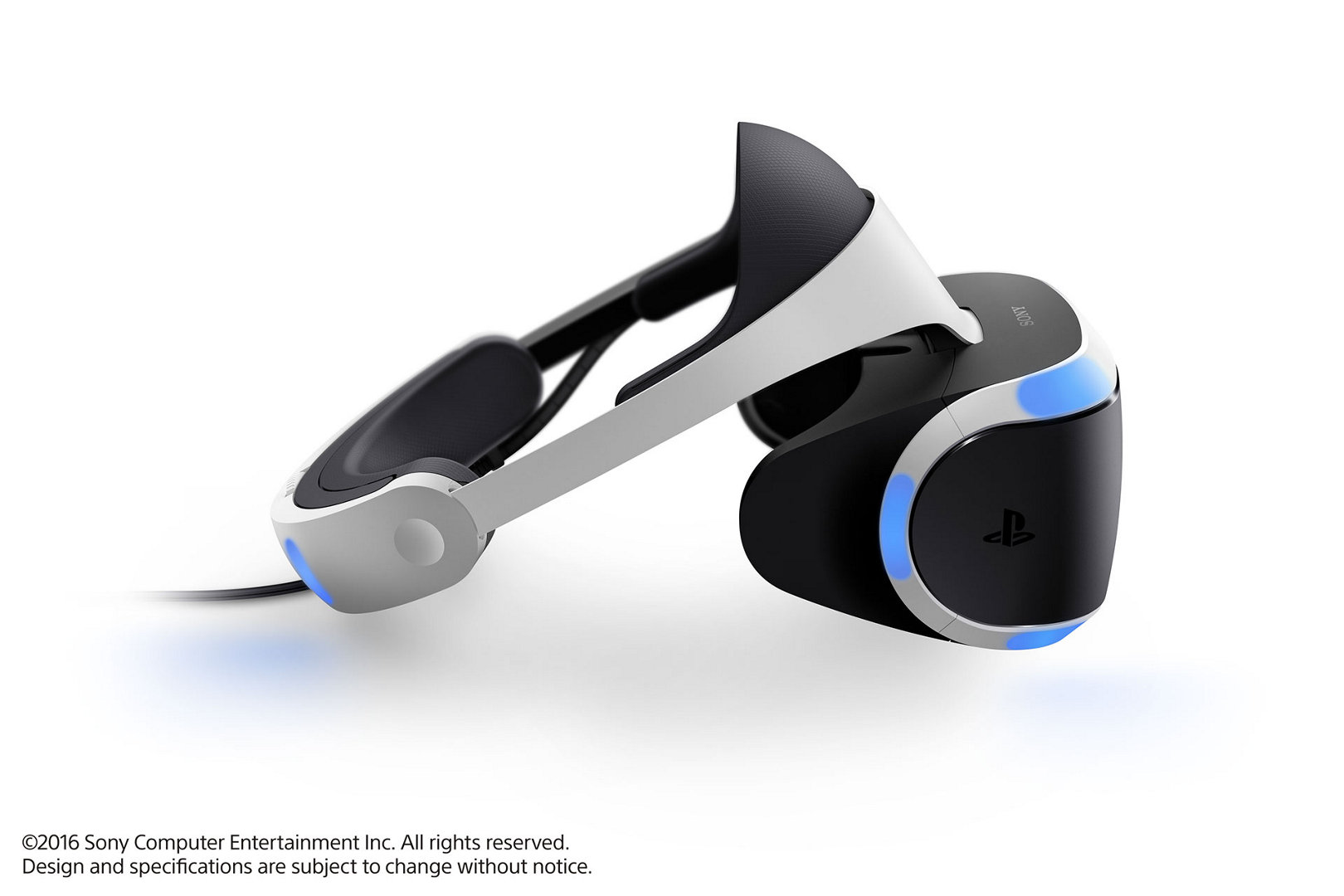
Here, we present to you five reasons we're excited to strap on PSVR and dive directly into the game.
-
No Bundle…Yet
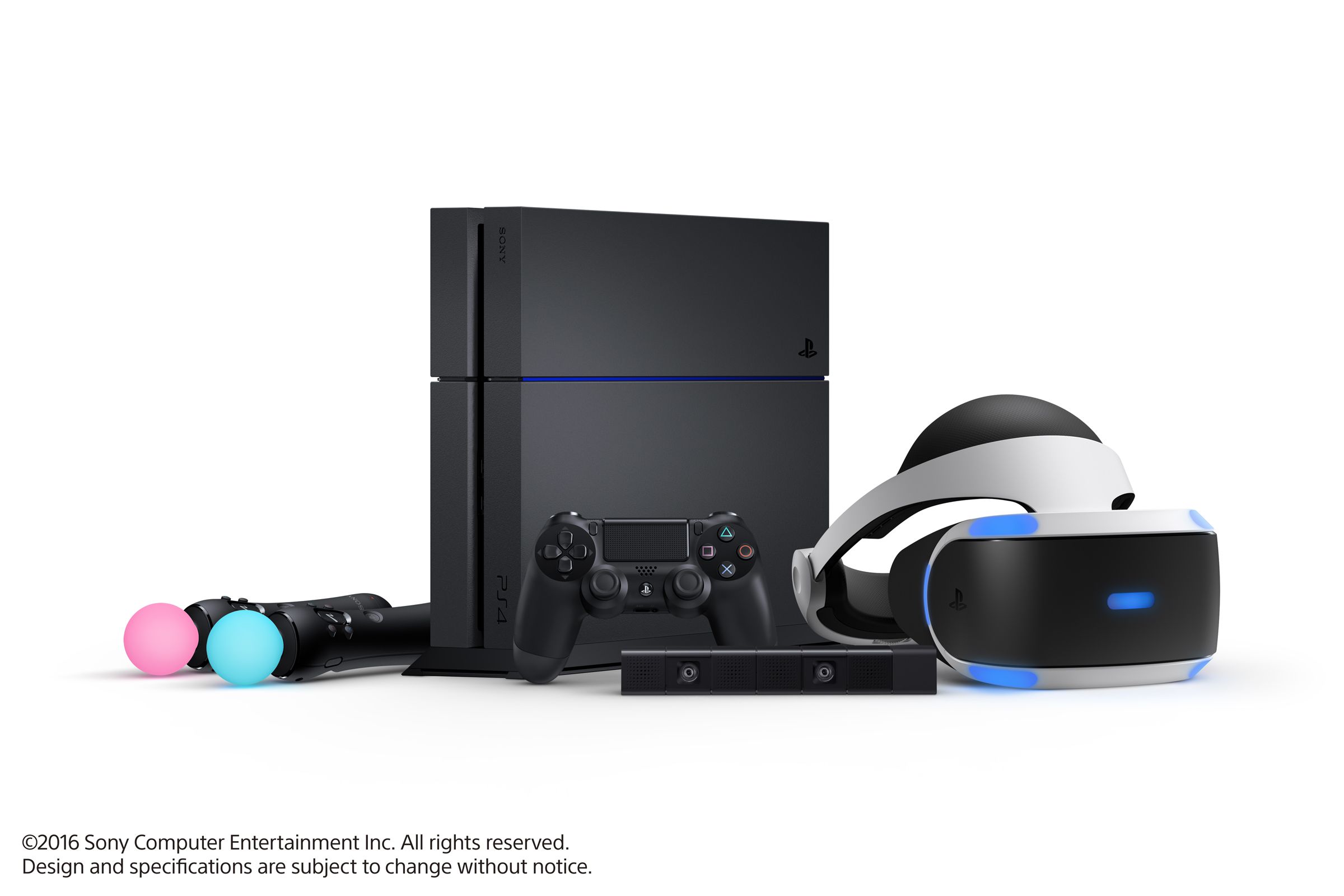
Sony currently has no plans to bundle together the PSVR and PlayStation 4. That could change further down the line once both systems become slightly cheaper.
-
Our Review
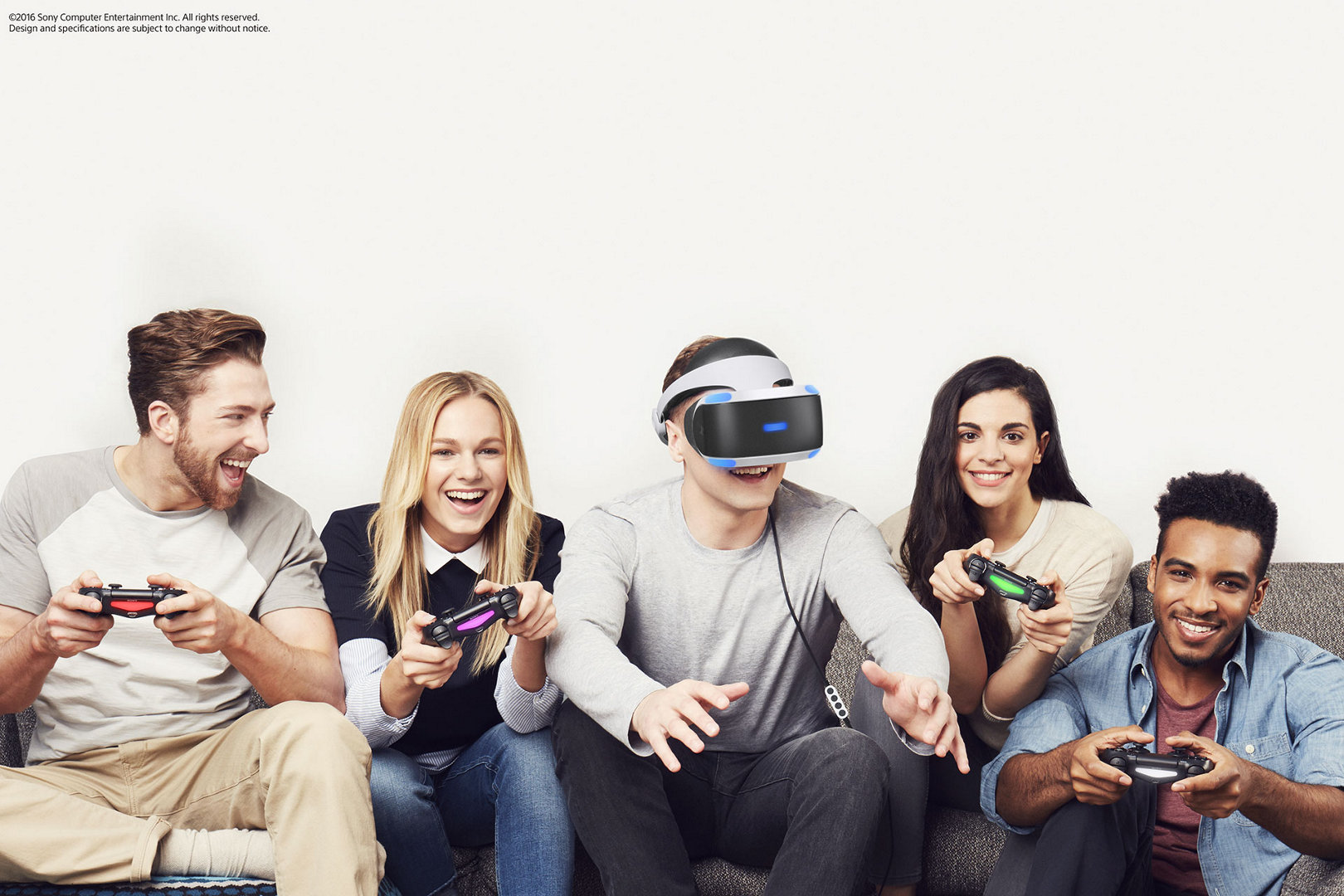
Units are starting to appear in the wild, meaning we're fast approaching release date. As for our review, it'll be handled by PSLS' founding father, Anthony Severino.
